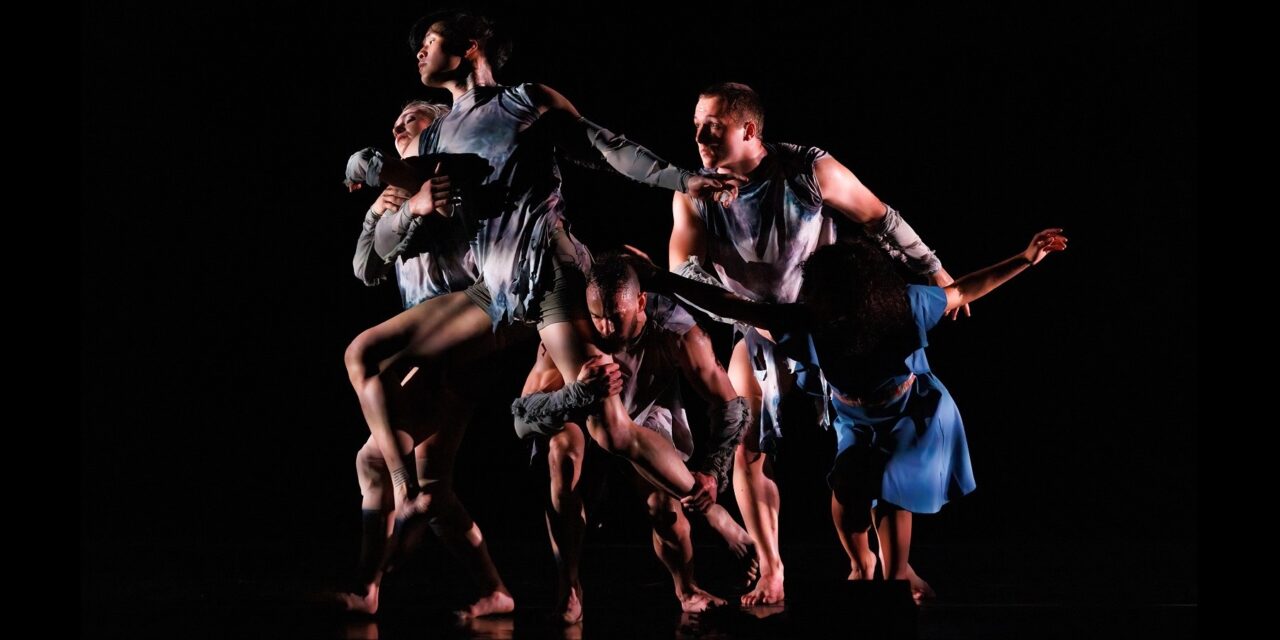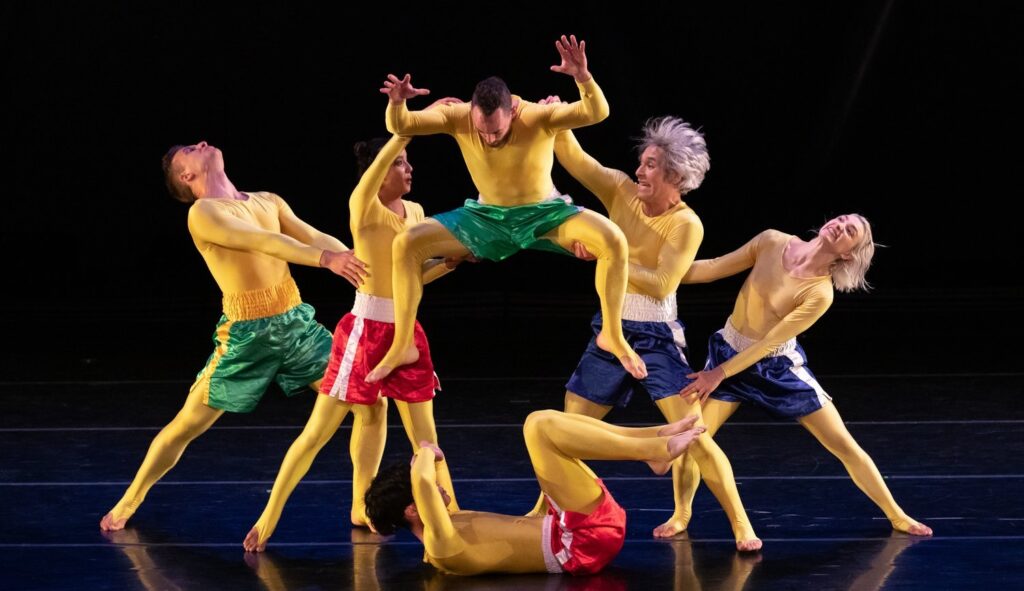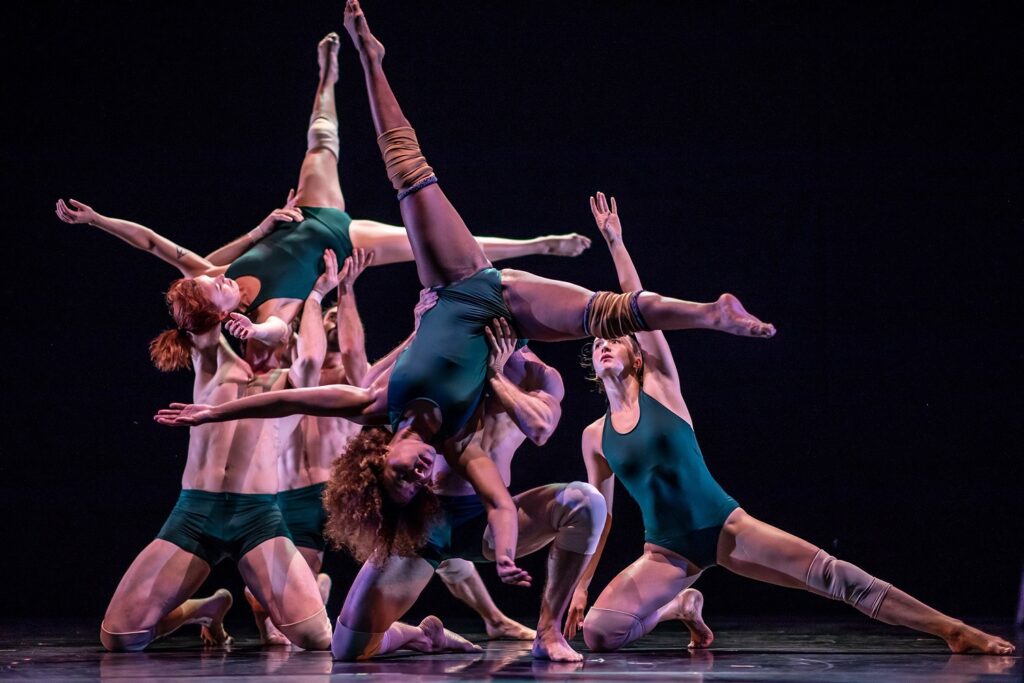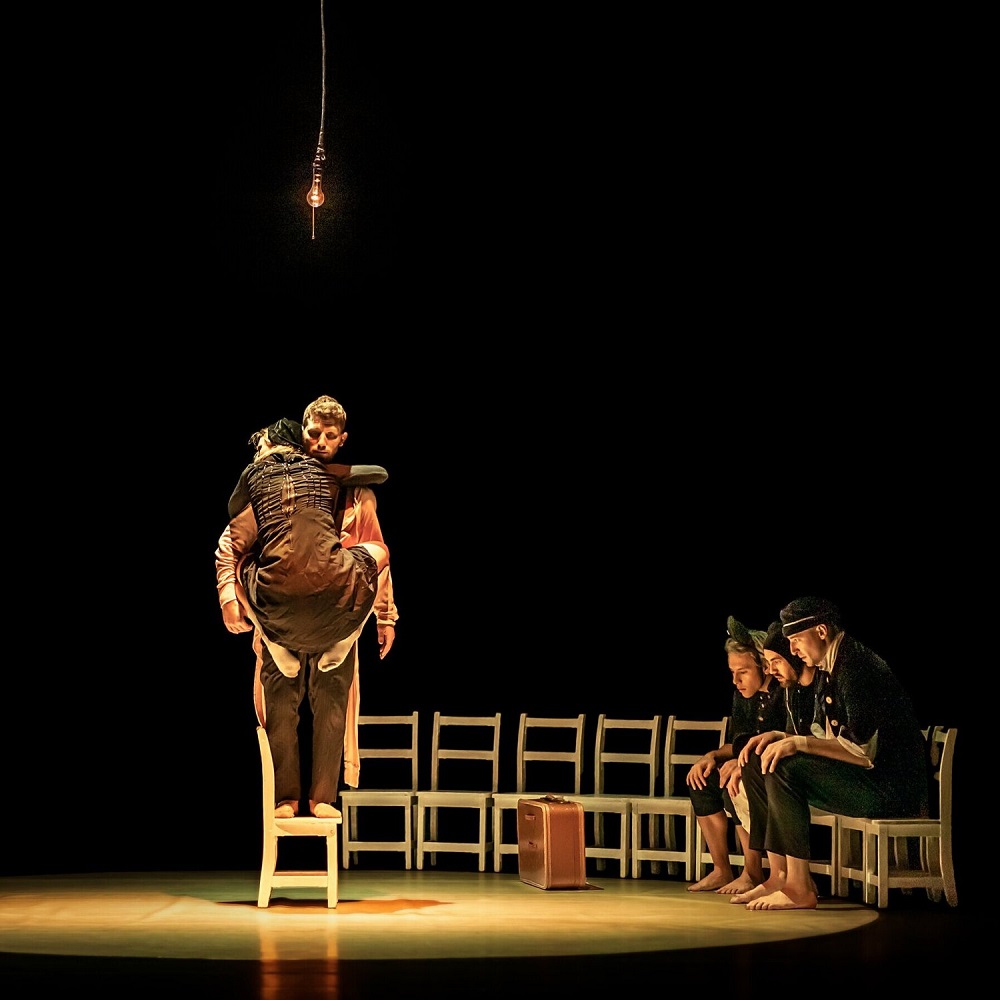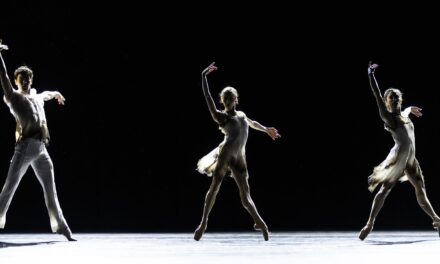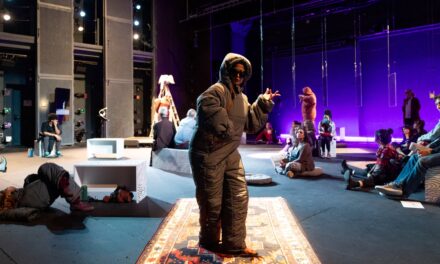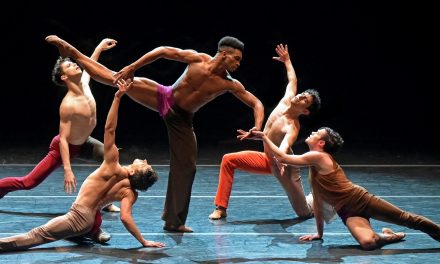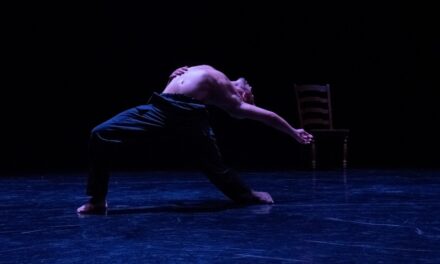This past Saturday night, Pilobolus stopped at the famous Carpenter Performing Arts Center in Long Beach to perform a four part series of choreographed dances in their world tour of re:CREATION. As audience members shuffled into the traditional theatre space, the curtain remained up so the audience members could view the dancers warming up. While this act felt flashy and pretentious (a very un-Pilobolus way to go about things) it also knocked down the fourth wall for those who have never seen the company. Quincy Ellis, one of the featured dancers in re:CREATION, came out to speak to the audience beforehand. Ellis asked, by show of hands, who had seen Pilobolus or concert dance before, and with the house lights on the audience participation immediately relaxed the room. It is this strategic, down to earth, human connection that puts Pilobolus at the top of dance community before dance reputability; however, the company’s eccentricity can only be matched by its physicality, and re:CREATION is no exception.
In the first piece, entitled Bloodlines, dancers Hannah Klinkman and Jessica Robling set the bar for a Pilobolus night of extravagance and wonder. In this duet, both movers relied on the gravitational weight shift from their bodies to lift one another up and down. In almost instant contact from the start, Klinkman and Robling moved with strength and precision, as if one were taking care of the other, and visa-versa. With red stained short unitards on, the movers danced under falling rose petals, suggesting something personal, perhaps the end of a special bond.
The Second piece, called Walklyndon, gave audiences that true Pilobolus flare they are known and remembered for. The piece was choreographed by the founders, Moses Pendleton, Jonathan Wolken, and Steve Johnson who were not originally dancers by the book. Walklyndon is perhaps one of the best examples of Pilobolus’ satire, and sublime physical comedy. Performed by Connor Chaparro, Quincy Ellis, Hannah Klinkman, Sean Langford, Darren Robinson, and Jessica Robling, the dancers wore traditional yellow unitards with long sleeve and pant coverings, with multicolored gym or boxer shorts on top. Moving swiftly from stage right to stage left, each dancer would knock another one over, run into one another, pick the other up, or defy gravity with a swing from side to side. Performed in silence, what could have been a gimmick and come off as “trying too hard to make fetch happen” landed in all the right funny bones, proving that audiences still love good ol’ fashion slapstick with integrity.
Branches, originally commissioned by Jacob’s Pillow Inside/Out Series in 2017, wanted Pilobolus to make a piece “that represents [your] experience(s) with nature” and it definitely shows in every aspect. Starting off as animal or representational beings of nature, the performers take on the quick flighty sensation of birds, or monkeys until falling into a watering hole where everyone’s demeanor changes with the interpretation of fluid water. This is the first piece where we see the company as a whole create tableaus with their physical form to set a mood or landscape. As alluring as Branches was, the piece relied on the musical cues of natural sound brought to the stage, where each dancer mimicked movement representing creation’s counterpart. For a company so based in redefinition and human expression, I found this tired and a bit unoriginal.
The star piece was saved for the end in Rushes; if filmmakers Wes Anderson and Jean-Pierre Jeunet were to stage a dance, I would like to imagine it would be a lot like Rushes. With props of white chairs, a suitcase, a projection in new media, and a singular light bulb hanging from the rafters, we see Pilobolus’ capability in storytelling with reinforcement from outside sources. As two women, Klinkman, and Robling sit unassumingly side by side in the roundabout lit circle center stage, dancer Darren Robinson sits nearby with a suitcase in hand. Dancers Sean Langford, Connor Chaparro, and Quincy Ellis quarreled, reconciled, and attended to one another in a quick contact partnering trio. At one point Robinson walks on top of the white chairs, carrying Robling as the other men quickly disperse the chairs, one in front of the other, so a new pathway is created. Rushes is quirky and imaginative and leaves the audience with enough question marks and space to insert their own feelings and memories with the piece.
While re:CREATION didn’t have a specific tune, story, or theme, it felt beautifully unequivocal all the same. While a showcase of work for an evening performance can be tricky, Pilobolus found a way to still keep us full, and sincere as viewers. It was neither candid nor cold, but a perfect balance of performance art meets dance meets acrobatic comedy.
To learn more about Pilobolus, please visit their website.
To learn more about The Carpenter Center, please visit their website.
Written by Grace Courvoisier for LA Dance Chronicle.
Featured image: Pilobolus – Ballad – Photo by Ben McKeown.

